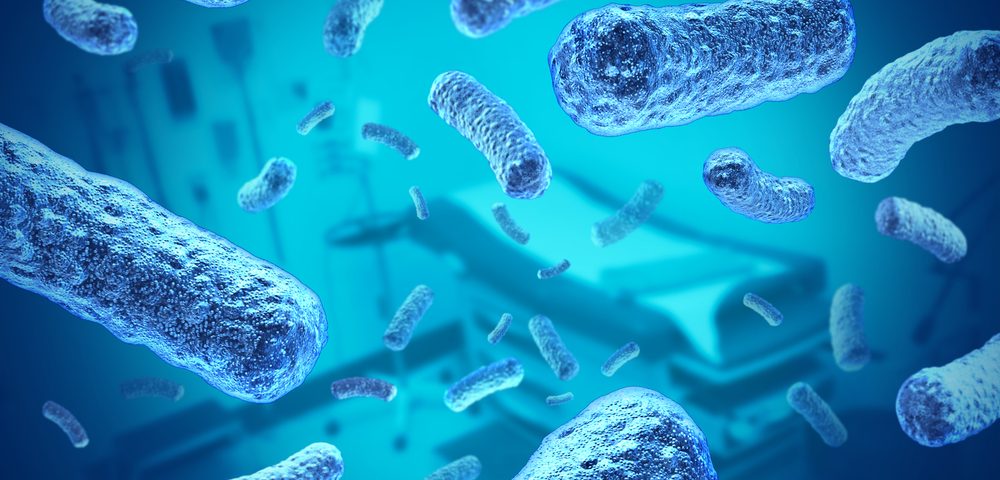P. aeruginosa Toxin May Be Reason for Single Strains Found in CF Infections, Study Reports

A protein toxin called Tse7 is used by Pseudomonas aeruginosa to kill neighboring bacteria, and may help explain why lung infections in cystic fibrosis patients are often dominated by a single P. aeruginosa strain, a new study reports.
The research, “The Pseudomonas aeruginosa T6SS-VgrG1b spike is topped by a PAAR protein eliciting DNA damage to bacterial competitors,” was published in the journal Proceedings of the National Academy of Sciences.
Bacterial interaction, essential for an efficient use of food resources, also protects bacteria against predators or the immune system. Fighting among competitors is common, for which bacteria have developed multiple strategies.
Besides the release of diffusible molecules, such as hydrogen cyanide, bacterial weapons include the contact-dependent inhibition system, through which a toxin is delivered into neighboring cells.
Researchers at Imperial College London investigated the type VI secretion system (T6SS), which also leads to contact-dependent cell death or prevents growth. Antibacterial toxins are the most thoroughly characterized type of molecule delivered by T6SS.
In P. aeruginosa, studies have shown that an individual T6SS toxin specifically recognizes its own VgrG immunity protein, protecting the producing cell from damaging itself or from T6SS-dependent killing by sister cells. Of note, VgrG proteins act as the puncturing device of T6SS, allowing bacteria to inject toxins directly into other cells.
The researchers focused on the vgrG1b gene cluster, and provided evidence of a newly characterized toxin — Tse7 — whose delivery depends on vgrG1b and its associated gene cluster, known as H1-T6SS.
Released Tse7 showed an ability to degrade the DNA of different bacteria interacting with the VgrG1b tip of T6SS via a specific domain. When researchers disrupted this interaction by introducing mutations in Tse7, they found that both toxin delivery and bacterial killing activity stopped.
Every bacterium that produces a toxin also produces an antitoxin (an immunity protein), making bacteria immune to their own toxins. In this case, researchers found that P. aeruginosa produces an immunity protein against its Tse7 toxin, called Tsi7.
They observed that interaction with Tsi7 protects the toxin-producing bacteria in a strain-dependent manner, meaning that each P. aeruginosa strain has a unique version of Tsi7 that is protective only against the toxin produced by the same bacteria strain. This suggests that T6SS-mediated intraspecies competition could help explain why P. aeruginosa samples from cystic fibrosis patients tend to be dominated by a single strain, they said.
“Overall, our study highlights the diversity of T6SS effectors, the exquisite fitting of toxins on the tip of the T6SS, and the specificity in Tsi7-dependent protection, suggesting a role in interstrain competition,” the scientists wrote.
“There is much more to learn about the exact role of T6SS in shaping the composition of bacterial communities in P. aeruginosa infections, which would eventually allow us to use our fundamental understanding of this system to tackle health-related problems,” Alain Filloux, PhD, the study’s senior author, said in a university news release written by Bernadeta Dadonaite.
Luke Allsopp, PhD, a lead study author, added: “Further research into the T6SS and how it allows bacteria to adapt to different environments is important for understanding the mechanisms that govern clinical infections.”







